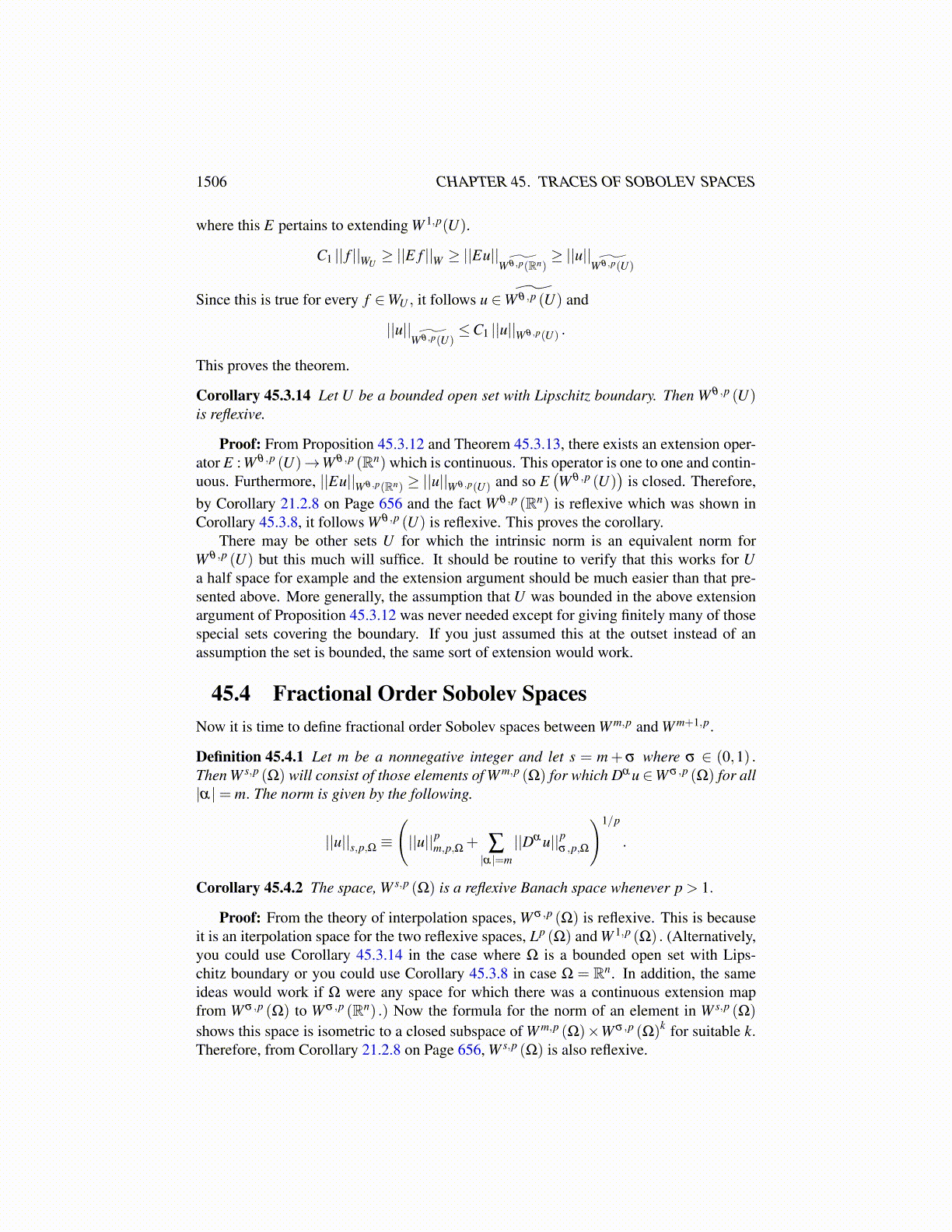
1506 CHAPTER 45. TRACES OF SOBOLEV SPACES
here this is centering at 0 and stretching B since λ will be large. Let h be the name of thismapping. Thus
h(x̂) ≡ λ
(x̂− b̂0
),
k(x̂) ≡ h−1 (x̂) =1λ
x̂+ b̂0
These mappings are defined on all of Rn. Now let u′ be defined on U ′ as follows.
u′ (x̂,xn)≡ k∗u(x̂,xn) .
Also letg′ (x̂)≡ k∗g(x̂) .
Thus g′ (x̂) ≡ g(
1λ
x̂+ b̂0
)= g(k(x̂)) . Then choosing λ large enough the Lipschitz con-
dition for g′ is as small as desired. Always assume λ has been chosen this large and alsoλ ≥ 1. Furthermore, g′
(x̂′)= x′n describes the boundary in the same way as xn = g(x̂).
Now I need to consider whether u′ ∈ ˜W θ ,p (U ′). Consider
∫U ′
∫U ′
∣∣∣u′(x̂′,xn
)−u′
(ŷ′,yn
)∣∣∣p(∣∣∣x̂′− ŷ′∣∣∣2 +(xn− yn)
2)p+nθ
dx′dy′
=∫
U ′
∫U ′
∣∣∣k∗u(x̂′,xn
)−k∗u
(ŷ′,yn
)∣∣∣p(∣∣∣x̂′− ŷ′∣∣∣2 +(xn− yn)
2)p+nθ
dx′dy′
Then change the variables x̂′ = λ
(x̂− b̂0
)= h(x̂) with a similar change for ŷ′, the above
expression equals (λ
n−1)2 ∫
U
∫U
|u(x̂,xn)−u(ŷ,yn)|p(λ
2 |x̂− ŷ|2 +(xn− yn)2)p+nθ
dxdy
Thus ∣∣∣∣u′∣∣∣∣ ˜W θ ,p(U ′)≤ λ
n−1 ||u|| ˜W θ ,p(U)< ∞ (45.3.21)
and k∗ : ˜W θ ,p (U) to ˜W θ ,p (U ′)is continuous and linear. Similar reasoning shows that h∗ is
continuous and linear mapping ˜W θ ,p (Rn) to ˜W θ ,p (Rn). By the first part of the argumentthere exists a continuous linear map
E ′ : ˜W θ ,p (U ′)→ ˜W θ ,p (Rn)